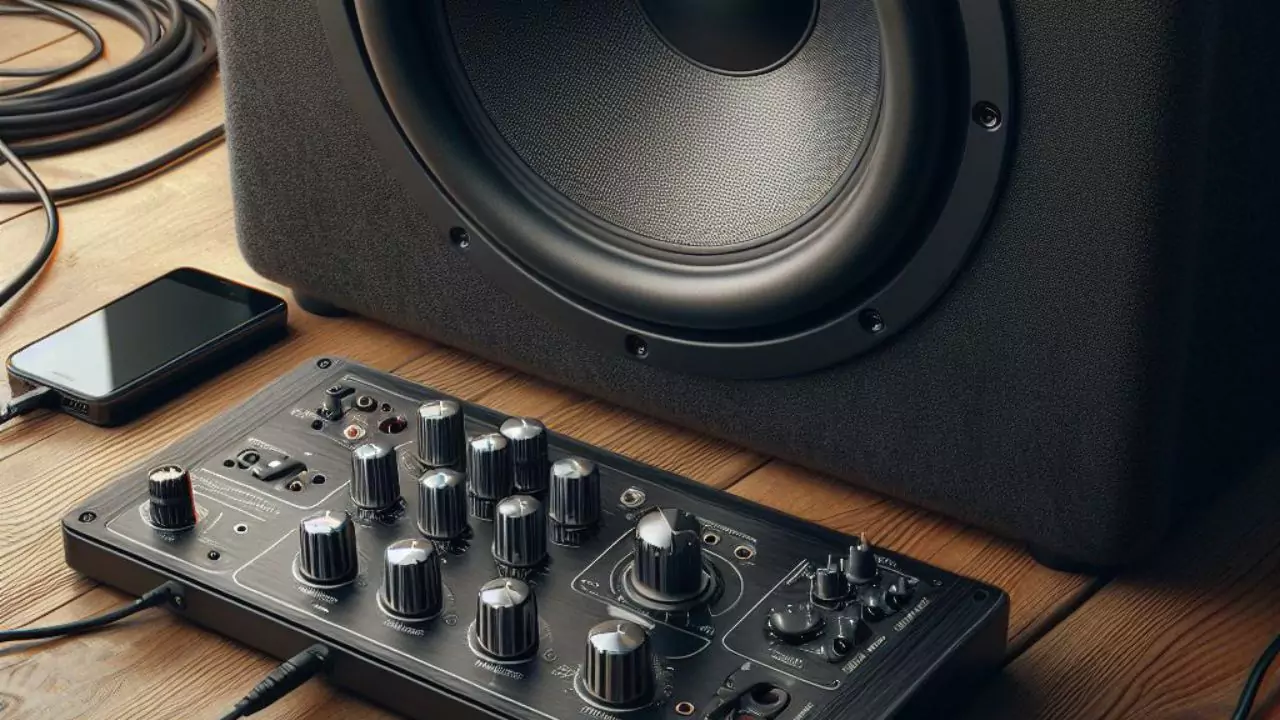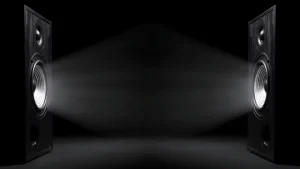To power a passive subwoofer, you need a strong amplifier, so that the output is good enough without any distorted noises. Passive subwoofers do not come along with any built-in amplifiers and they work just like any traditional loudspeaker unit. So, you need to connect an external amplifier by matching the configuration and characteristics to power the passive subwoofers.
So, disconnect the devices from the power source, and connect the subwoofer line outputs of the receiver to the line input of the external amplifier. Now, connect the speaker outputs on the amplifier with the speaker port of the passive subwoofer.
Confused? Let’s get started with the step-by-step process of how you can power a passive subwoofer.
In This Article:
What is the difference between passive and powered subwoofers?
Subwoofers come in two categories: Passive and Powered or active subwoofers. Powered subwoofers have an internal amplifier but a passive subwoofer does not. So, you need to power the passive one, using an external amplifier.
You can easily detect whether the subwoofer is passive – if you see that it does not have line input or only has a speaker connection. Also, it will be lighter as it does not have an integrated amplifier within the same enclosure.
6 Steps to Power a Passive subwoofer
You need to connect both an amplifier and a receiver to power up a passive subwoofer. So, here are the steps that you need to follow:
Step 1: Go through the subwoofer
You need to check the passive subwoofer before you join the wires. Inspect the type of subwoofer and verify whether the active subwoofer has a dual voice coil or single coil woofer system.
If it has a dual voice coil, then it provides you with more wiring options, but with a single coil woofer system, you get limited choices. Go through the manual so that you do not cause any damage to the subwoofer or receiver in the process.
Step 2: Get the right RCA cables
To build a connection between transmitters, you need proper connectors called RCA. This system is based on whether the passive subwoofer is a mono transmitter or stereo.
You need one RCA cable which would connect a passive server to the receiver, but if you have a stereo, then for that you need two RCA cables. You also need to check the cable color to match the subwoofer’s ports.
Step 3: Join the external amplifier
You can join the passive subwoofer with an external amplifier, but be careful while making the connection. First, you need to turn off the passive and connect the RCA cable to the subwoofer, and then the wires to the external amplifier. Where the RCA cables are connected to the jack of the amplifier, it should be labeled as subwoofer output or LFE (Low-Frequency Effects).
Step 4: Connect the amplifier to the speaker
After you have wired the external amplifiers to the passive subwoofer, connect the speakers. You will find an output jack labeled as “Font” or “Main” at the amplifier’s rear side. Now, connect the speaker with the amplifier, using the outputs.
During the wiring step, you need to ensure that both the left and right speakers have been connected properly. In case, the speaker lacks the labels, then you can check the polarities label.
Always remember that the speaker’s negative terminal should be connected to the negative terminal of the amplifier and the positive terminal of the speakers should be connected to the positive terminal of the amplifier.
Step 5: Turn on the sound system
After you have properly wired the passive subwoofer to the receiver and the speakers are also connected properly switch on the main power supply. Next, adjust the volume and it should not be too loud.
You can turn on the bass management features for the receiver to adjust the sound quality. Also, you must pay attention to errors and distortions in the sound quality to fix them later.
Step 6: Connect the speakers
To connect the speaker, you have to secure the connection between the passive subwoofer and external amplifier which would help to receive the bass sound effect. Determine the frequency and verify the location of the speaker within the subwoofer system.
You can set the frequency to get the desired base effect. Prepare the subwoofer for the small speakers and separately place them so that it does not produce too loud noise. Finally, complete the connection through the terminal.
What are the advantages of powering a passive subwoofer?
Passive subwoofers are easier to maintain and use. It also uses lower energy frequencies making it less expensive to power. Moreover, if a proper connection is made, then it reduces the chances of power outages and also saves money. In the case of passive subwoofers, you can use different amplifiers to power it. After you connect the subwoofer to the external amplifier, you can disconnect it and join another.
How to connect multiple subwoofers?
If you want to connect multiple subwoofers, then connect one receiver output to one subwoofer and then connect the other receiver output to another subwoofer. Alternatively, you can also use an RCA Y adapter which will help you to form two parallel connections with low-frequency audio signals where you can join two separate subwoofers.
What cables are required to connect a subwoofer to a receiver?
You need an LFE, RCA, and speaker wire that fits into the audio port to connect the subwoofer to the receiver.
Which is the better option to use an external amplifier or a built-in amplifier?
Subwoofers have low-frequency sound so if you connect the passive subwoofer directly to the receiver you can get optimum quality of best sound. Also, in the case of powered subwoofers, it can become too powerful for the receiver to handle. Thus, it is always better to connect a passive subwoofer to an amplifier and prevent draining power from the receiver. Moreover, it will also improve the audio quality.




